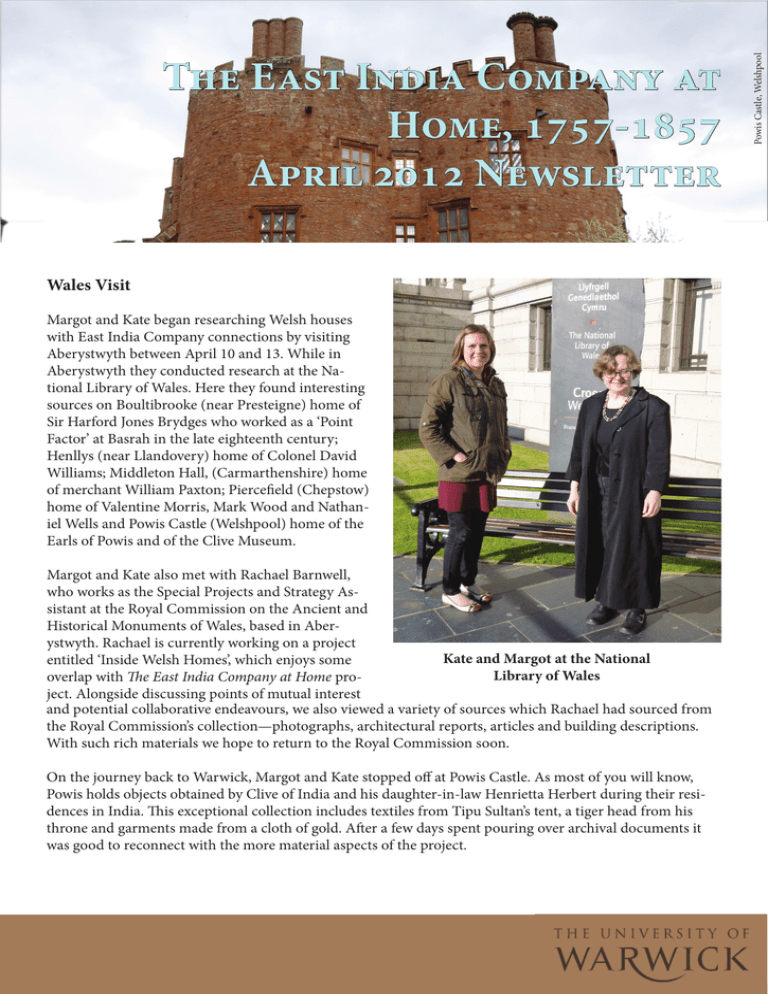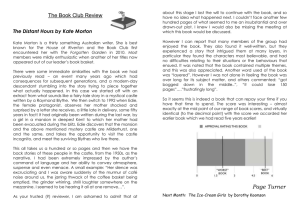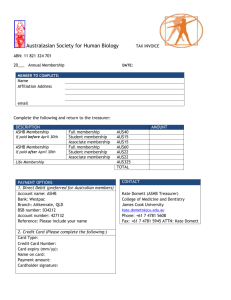The East India Company at Home, 1757-1857 April 2012 Newsletter Wales Visit
advertisement

Wales Visit Margot and Kate began researching Welsh houses with East India Company connections by visiting Aberystwyth between April 10 and 13. While in Aberystwyth they conducted research at the National Library of Wales. Here they found interesting sources on Boultibrooke (near Presteigne) home of Sir Harford Jones Brydges who worked as a ‘Point Factor’ at Basrah in the late eighteenth century; Henllys (near Llandovery) home of Colonel David Williams; Middleton Hall, (Carmarthenshire) home of merchant William Paxton; Piercefield (Chepstow) home of Valentine Morris, Mark Wood and Nathaniel Wells and Powis Castle (Welshpool) home of the Earls of Powis and of the Clive Museum. At the British Library Margot and Kate also met with Rachael Barnwell, who works as the Special Projects and Strategy Assistant at the Royal Commission on the Ancient and Historical Monuments of Wales, based in Aberystwyth. Rachael is currently working on a project Kate and Margot at the National entitled ‘Inside Welsh Homes’, which enjoys some Library of Wales overlap with The East India Company at Home project. Alongside discussing points of mutual interest and potential collaborative endeavours, we also viewed a variety of sources which Rachael had sourced from the Royal Commission’s collection—photographs, architectural reports, articles and building descriptions. With such rich materials we hope to return to the Royal Commission soon. On the journey back to Warwick, Margot and Kate stopped off at Powis Castle. As most of you will know, Powis holds objects obtained by Clive of India and his daughter-in-law Henrietta Herbert during their residences in India. This exceptional collection includes textiles from Tipu Sultan’s tent, a tiger head from his throne and garments made from a cloth of gold. After a few days spent pouring over archival documents it was good to reconnect with the more material aspects of the project. Powis Castle, Welshpool The East India Company at Home, 1757-1857 April 2012 Newsletter Consuming the Country House Conference, University of Northampton On 18-19 April, Helen and Kate attended the Consuming the Country House Conference organised by Professor Jon Stobart at the University of Northampton. It was wonderful to see so many Project Associates at the conference. On 18 April, Helen gave one of the keynote lectures of the conference. Her paper discussed ways of understanding the historiography of country house literature, and the ways in which access to archives has influenced changes in focus. Helen’s paper considered three interlinked arenas in which the country house and consumption intersect: 1) private & public/personal & national; 2) historians & heritage: the way we do history; and 3) European and global frameworks. One of the key themes underpinning the paper was the need to provide a comparative picture of how this field of historical inquiry has developed across Europe, and the need to think about the global nature of the British country house. On 19 April, Kate gave a paper entitled ‘Objects and Identities in the English Hindostaan’, which particularly discussed Englefield House, Berkshire. Kate’s paper examined how by understanding the country house as a series of processes it is possible to uncover a history which is shaped by global and imperial connections. Both Helen and Kate found the conference thought-provoking and stimulating - many thanks to Professor Jon Stobart and his team for organising it. New Case Studies in the Pipeline The project has a number of new case studies under development. Ellen Filor is producing a study of Yair, home the Pringle family in the Scottish Borders. Welsh case studies, as indicated above, are also in development. One particular area illuminated by the Powis Castle archives is the extent to which Indian and Company goods—textiles, wallpaper and porcelain—furnished not only rooms occupied by members of the Herbert and Clive families, but also the rooms inhabited by their servants. In addition to extending the project’s reach beyond England, April has seen the submission of the first drafts of case studies written by project associates. Two associates have produced case studies based on objects that they brought for discussion to the British Library study day. Georgina Green, who brought shards of blue and white Chinese porcelain recovered from the Valentine East Indiaman, has written a case study that knits together the histories of Sir Charles Raymond of the EIC, Valentines Mansion in Ilford and Chinese export ware. Sir John Sykes, who brought Sir Francis Sykes’s Indian seal to the study day, has drafted a case study of this object that traces the interlinked histories of Indian and English families central to the Company’s history in the 18th century into the 21st century. We hope to be able to post both case studies before the move to UCL, and look forward to developing further material for the project with project associates. Do please contact us if you have ideas for your own case study for the project. Powis Castle, Welshpool The East India Company at Home, 1757-1857 April 2012 Newsletter



![The mysterious Benedict society[1]](http://s2.studylib.net/store/data/005310565_1-e9948b5ddd1c202ee3a03036ea446d49-300x300.png)

